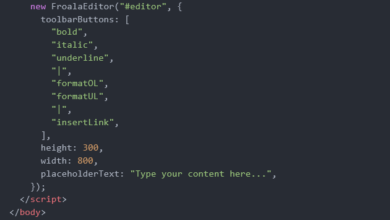Getting Started with WebdriverIO: A Modern Approach to Web Automation

A web application with bugs and issues is not appreciated or gained the approval of testers and developers. Therefore, to address this, thorough testing using an all-around test automation tool is required, one that comes with extensive features for both web and mobile-based application testing.
Thankfully, WebDriverIO is one such user-friendly automation testing framework comprising exceptional benefits that can make the configuration, test execution, and setup easier. It enables testers to plug tests in the browser of choice and overcome the need for a robust testing tool for both web and mobile applications.
In this article, we will provide a brief overview of WebdriverIO, how it works, and why testers should opt for this tool. We will also discuss how to use webdriverIO for web automation and understand some of its benefits and frameworks.
What is WebdriverIO?
WebdriverIO is an open-source end-to-end testing framework that is built to automate modern web applications efficiently. It is an independent execution of Selenium Webdriver’s communication interface. It is designed on the top of NodeJS bindings of Selenium which provides a vast array of plugins that are beneficial in building a robust and scalable web automation.
This framework can also automate mobile applications either by simulation or by using an actual device. All browsers support WebdriverIO and it does not demand testers to install an advanced browser that would not be used by them, and thus a simplified testing approach is offered for testing web applications.
The support for multiple programming languages and a user-friendly approach make WebdriverIO a preferred choice among testers and even beginners. It adheres to the W3 framework’s structural criteria and standards.
By embracing the most of WebdriverIO, testers can write tests in a very brief and clear way as well as ensure optimal and effective testing of web applications over a wide range of platforms and browsers. It is a highly flexible framework that enables testers to write tests in JavaScript by using frameworks like Jasmine and Mocha. It supports multiple reports including dot, JUnit, spec, allure, etc.
Why use WebdriverIO for web automation testing?
WebdriverIO is a robust framework for automation testing having a rich set of features, which makes it an ideal choice for efficient and effective web automation testing.
Cross-browser compatibility
It offers fruitful cross-browser compatibility which enables test execution on various browsers. Testers can write test scripts and seamlessly integrate with diverse browser drivers thus ensuring consistent behavior across platforms.
Multi-language support
Another reason for using WebdriveR is its support for multiple programming languages. With this feature, testers can write test scripts in multiple programming languages, like TypeScript, JavaScript, and many others. This in turn enables testers and developers to leverage the existing coding skills and preferences.
Rich set of APIs and commands
This framework provides a rich and extensive set of APIs and commands. These APIs provide an interface for interaction with web elements. The user action can be simulated, along with assuring the correct functioning of the application. Its expressive APIs and intuitive syntax boost the maintainability and readability of the test scripts.
Seamless integration with testing frameworks
It can integrate with popular testing frameworks like Jasmine and Mocha seamlessly. Therefore this integration enables testers to amplify the capabilities and features of these frameworks, like test reporting, organization, and parallel test execution.
Support for continuous integration (CI)
With WebdriverIO the integration with CI/CD pipelines becomes easy. It offers support to different CI tools such as Jenkins, CircleCI, and Travis CI, and thus enables testers to automate the testing process and get a reliable and consistent execution of tests.
Community plugins and integrations
An extensive set of plugins and integrations have been evolved by the WebdriverIO community. This helps strengthen the capabilities of the framework. Moreover, these plugins also bestow other additional functionalities, like taking screenshots, generating test reports, and integrating with popular tools.
How does Webdriver work?
Now the tricky question is how does the WebdriverIO work? The answer is simple as the WebdriverIO works under the WebDriver protocol in the back end. A set of HTTP endpoints is designated by the WebDriver protocol standard for initiating actions in a web browser, such as clicking on an element on a webpage and navigating to a specific URL. Each of the browsers, be it Firefox or the Chromium browser, carries out the WebDriver protocol in its code to highlight the HTTP endpoints as outlined in the standard.
A client for the WebDriver protocol in JavaScript is implemented by the WebDriverIO framework so it is capable of speaking the WebDriver language of HTTP endpoints accompanied by many web browsers. A different chromium-only DevTools standard is also implemented by it. In addition to the WebDriver protocol, WebdriverIO also comes up with a convenient set of primitives for writing tests, for example, the mock objects, the CSS query selectors, and a simple test runner.
As soon as the test is written by the developer, by utilizing the WebdriverIO, it is interpreted as the JavaScript test code by the framework and also delivers the corresponding WebDriver protocol commands. These commands are useful in ensuring that the browser being used for testing operates correctly and even figures out the outcome of the commands so that the successful and failed tests can be determined.
Framework of WebdriverIO
A modular and flexible framework is provided by the WebdriverIO which helps in effectively building the tests. It assists in numerous attributes like page objects, hooks, and custom commands, that enable testers to form a maintainable and scalable test suite. Testers can organize the tests logically, organize the reusability of the code, and magnify the overall test development process.
Several types of WebdriverIO frameworks can be utilized for web automation, some popular ones are:
Jasmine
Jasmine is a behavior-driven framework that presents structured and substantial built-in functionalities that are useful in executing and structuring tests.
Jest
Jest is a JavaScript testing framework that aims to provide test runners, mock, and assertions functionalities that are effortless to use.
Cucumber
Cucumber enables testers, and developers to write test scripts in natural language format and supports behavior-driven development (BDD).
Mocha
Mocha is a flexible testing framework that offers a plethora of attributes like test reporting, test organization, assertion library, etc.
These frameworks assist in structuring test organizing, enhancing test code, boosting test readability, and providing other benefits for optimizing the test automation process by using WebdriverIO.
Benefits of WebdriverIO
WebdriverIO comes with a diverse set of benefits and attributes which makes it outshine other tools. Some of the benefits are mentioned below.
Simplified extendability
WebdriverIO is an easily extendable framework that enables testers and developers to insert helper functions rapidly and can even introduce more complicated sets of existing commands. This robust testing framework has a wide arena for both built-in plugins and community-created tests.
These communities and plugins promote an easy integration that is useful in fulfilling the testing demands. Furthermore, to support the WebDriver protocol, WebdriverIO also supports popular mobile testing frameworks like Appium and Chromium DevTools. This enables testers to use WebdriverIO on different projects having diverse requirements.
Front-end accessibility
As it is clear that the WebdriverIO is designed entirely in JavaScript, which is favorable for many web testers and web developers that comply with JavaScript codebases. WebdriverIO tests are very easily accessible and can be easily read, and written and even offer debugging capabilities for teams where they can perform JavaScript codes regularly.
WebDriver protocol
Having the WebDriver wire protocol at its core, WebdriverIO has a supreme and robust platform comprising tools for browser automation ahead and setting the bar high. This protocol enables testers to use exceptional quality drivers for browser automation without the need for writing Java-based tests. These drivers for the WebDriver protocol are available for all major browsers, which means that WebdriverIO possesses the same cross-compatibility.
Open-source
Being an open-source framework with a primary focus on the JavaScript ecosystem, WebdriverIO offers many benefits. A non-profit organization named OpenJSFoundation owns this framework and has taken up the platform to improve up-to-date performance.
Largely designed by the community as a whole, the framework shows advanced flexibility in the development process and web automation. Users can learn and support each other in the community channel thus a communication and user-friendly approach is automatically promoted.
How to use WebdriverIO in web automation testing
By utilizing the rich set of APIs and commands
To utilize the best of WebdriverIO’s potential for automation testing, it becomes important to be up-to-date with its core concepts and APIs. WebdriverIO provides an extensive set of commands that entitles the testers to interact with web elements, validate expected outcomes, and perform actions. These commands work as components for replicating user interactions, ensuring the correctness of the tests, and verifying application behavior.
By harnessing the power of Selenium WebDriver
The WebdriverIO is built on top of Selenium, which is a widely used automation testing framework for web applications. By integrating WebdriverIO with Selenium, a robust solution for web test automation is achieved. Testers can utilize Selenium’s WebDriver protocol for test execution across different platforms and browsers.
By opting for a cloud-based platform
LambdaTest is a popular and trusted automation testing platform that provides a simplified approach to testing and automating web applications. The initiative APIs of LambdaTest enable testers to perform various actions. LambdaTest is an AI-powered test orchestration and execution platform used to run manual and automated tests at a broad scale. Both real-time and automation testing can be carried out across 3000 environments and real mobile devices by using LambdaTest.
This robust testing platform acts as an interface for advancing the browser’s functionality and promoting interaction and comes as an excellent choice in the testing community.
LambdaTest also shows seamless integration with Selenium. For those who are unaware of what Selenium is, the response is it is a popular automation testing tool. In web automation using WebdriverIO, Selenium acts as an arch for the client and the browser application.
As the Webdriver.IO is wrapped with Selenium, test scripts can be run on all browsers. These tools serve as invaluable assets in creating mobile applications that meet stringent quality standards and deliver exceptional user experiences.
By harnessing most of the testing frameworks
The WebdriverIO provides testers the potential to choose from popular testing frameworks such as Jasmine or Mocha. These frameworks can integrate with WebdriverIO seamlessly and even offer an organized and structured approach for test execution and development. Testers can take advantage of their powerful features, like test suites, assertion libraries, and test runners, so that the readability and maintainability of the test code are optimized.
By making use of assertions
WebdriverIO provides a broad set of assertions to support the expected behavior of the web application. These assertions empower testers to verify the visibility of elements, compare attributes, examine specific text, and perform other validations necessary for robust testing.
Additionally, when using WebdriverIO, testers can avail different commands for navigating through web pages, interacting with form fields, locating elements, clicking buttons, and performing other essential actions.
Read also: How technology is revolutionizing Anti-Money Laundering in Travel: From AI to Blockchain
Conclusion
WebdriverIO is a dynamic automation testing framework that offers a user-friendly interface, multi-language support, cross-browser compatibility, a rich API, and extensive community resources. By taking advantage of its capabilities, testers can validate application behavior, automate browser actions effectively, and ensure optimized reliability of the tests. WebdriverIO comes with an extensive approach that is needed for effective and scalable web testing, be it a new automation tester, or an experienced professional.




